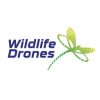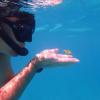Acoustic sensors enable efficient and non-invasive monitoring of a wide range of species, including many that are difficult to monitor in other ways. Although they were initially limited in application scope largely due to cost and hardware constraints, the development of low-cost, open-source models like the Audiomoth in recent years has increased access immensely and opened up new avenues of research. For example, some teams are using them to identify illicit human activities through the detection of associated sounds, like gunshots, vehicles, or chainsaws (e.g. OpenEars).
With this relatively novel dimension of wildlife monitoring rapidly advancing in both marine and terrestrial systems, it is crucial that we identify and share information about the utility and constraints of these sensors to inform efforts. A recent study identified advancements in hardware and machine learning applications, as well as early development of acoustic biodiversity indicators, as factors facilitating progress in the field. In terms of limitations, the authors highlight insufficient reference sound libraries, a lack of open-source audio processing tools, and a need for standardization of survey and analysis protocols. They also stress the importance of collaboration in moving forward, which is precisely what this group will aim to facilitate.
If you're new to acoustic monitoring and want to get up to speed on the basics, check out these beginner's resources and conversations from across the WILDLABS platform:
Three Resources for Beginners:
- Listening to Nature: The Emerging Field of Bioacoustics, Adam Welz
- Ecoacoustics and Biodiversity Monitoring, RSEC Journal
- Monitoring Ecosystems through Sound: The Present and Future of Passive Acoustics, Ella Browning and Rory Gibb
Three Forum Threads for Beginners:
- AudioMoth user guide | Tessa Rhinehart
- Audiomoth and Natterjack Monitoring (UK) | Stuart Newson
- Help with analysing bat recordings from Audiomoth | Carlos Abrahams
Three Tutorials for Beginners:
- "How do I perform automated recordings of bird assemblages?" | Carlos Abrahams, Tech Tutors
- "How do I scale up acoustic surveys with Audiomoths and automated processing?" | Tessa Rhinehart, Tech Tutors
- Acoustic Monitoring | David Watson, Ruby Lee, Andy Hill, and Dimitri Ponirakis, Virtual Meetups
Want to know more about acoustic monitoring and learn from experts in the WILDLABS community? Jump into the discussion in our Acoustic Monitoring group!
Header image: Carly Batist
This article discussed early work on modeling how acoustic properties of the environment will change with variations in weather.
9 January 2024
Analysing recordings of gunshots could help save endangered species around the world by identifying poacher hotspots.
7 January 2024
Digital monitoring tools are helping rangers protect wildlife in South America's Atlantic Forest. Could sound-based maps pin down the poaching threat?
7 January 2024
The IQOE Task Team on Low-Cost Hydrophones for Research, Education, and Citizen Science is looking for industry partners to develop a low-cost hydrophone.
15 December 2023
Article
How to engage decision makers for a more sustainable land management for both citizens and landowners in developing countries.
15 December 2023
With the support of Women in Conservation Technology (Kenya) and Arm, I had a chance to work with Kijabe Environment Volunteers in Kikuyu Escarpment Forest. This was an opportunity to channel my passion for the...
1 December 2023
Prospective PhD students with a background in acoustics and an interest in Arctic ecology are encouraged to email Michelle EH Fournet
16 November 2023
Sarab Sethi is looking for a PhD student (Sept 24) to investigate real time insect pollinator monitoring with acoustics. Sensor design, ML, lab and field experiments, and more !
16 November 2023
Join the Rainforest Connection & Arbimon team to develop software for biodiversity monitoring!
14 November 2023
Yale University & Map of Life Rapid Assessments - XPRIZE
8 November 2023
Baker Consultants has released new ecoacoustic research assessing the benefits of using automated detectors alongside transect bird survey methods.
30 October 2023
Article
Five #tech4wildlife people, projects and updates that caught my attention this month. This issue is a naturetech, biodiversity startup edition! Featuring a living map of the biodiversity startup scene, is nature data...
27 October 2023
April 2024
June 2024
July 2024
event
April 2024
event
March 2024
event
Here's what you missed at World Wildlife Day 2024
7 March 2024 9:02pm
Support Amazon turtle project
4 March 2024 12:31pm
A PHD POSITION AT NOTTINGHAM TRENT UNIVERSITY
27 February 2024 9:42am
Needing help from the community: Bioacoustics survey
14 February 2024 9:46am
24 February 2024 7:23pm
Was great to chat with you Sofia and I would encourage others in the Acoustics community to help provide input for Sofia's study!
26 February 2024 8:57am
Thank you so much for your encouraging words! I'm thrilled to hear that you enjoyed our conversation, and I truly appreciate your support in spreading the word about my survey within the Acoustics community. Input from individuals like yourself is incredibly valuable to my study, and I'm eager to gather as much insight as possible. If you know of anyone else who might be interested in participating, please feel free to share the survey link with them. Once again, thank you for your support—it means a lot to me!
Best regards,
Sofia
Voice activated recording devices on satellite collars
18 February 2024 7:01am
24 February 2024 8:38am
I am sure Simon can chime in with exact specifications. I do not have it with me now. The centre distance between the attachment holes at each in end is 20mm wich will fit the standard holes in a collar from Vectronics Aerospace.
Simon posted images of the logger attached to a collar on a spotted Hyeana here: https://twitter.com/chamaillejammes/status/1441657479612542990
To-do now done in South Africa:
— Simon Chamaillé (@chamaillejammes) September 25, 2021
☑️ Being ridiculously proud of achieving data transfer over local GSM and LoRa networks for tracker
☑️ Being ridiculously proud of the way our wehear logger fits on lions and hyaenas. Looking forward to listening to their life. pic.twitter.com/CvgvovVjOp
25 February 2024 9:31am
We are studying muskoxen which are exposed to a polar night of between 3-4 month where the sun does not come over the horizon. On the other hand it also means that it will be continously OVER the horizon during the 3-4 summer months.
We are keeping an eye out for kinetic energy harvesting and there has been some interesting progress recently:
https://journals.plos.org/plosone/article?id=10.1371/journal.pone.0285930
@M_Stanton , you provide a nice list of uses of animal borne audio. We could add environmental sounds both abiotic and biotic.
We would LOVE to use audio more for ground truthing behavioural states and we would LOVE if the audio recordings could be GPS time synced...
@jared , it sounds interesting with the mentioned increased capabilities of the Iridium system. Can you link to any references for that?
Cheers,
Lars
26 February 2024 12:43am
I heard it through industry chatter but can't find a news release on it yet.
Insect vibrational communication on AudioMoths
23 February 2024 4:16pm
Funded PhD Opportunity: Moose Acoustics at the University of New Hampshire
13 February 2024 1:21pm
Post-doc possition - Field spanning movement ecology, ecology of fear, bio-logging science, behavioral ecology, and ecological statistics
10 February 2024 7:20am
Bio-Logging Science Symposium
9 February 2024 3:59pm
ISPA: A New System for Transcribing Animal Sounds
8 February 2024 7:17pm
These researchers are introduce the ISPA (Inter-Species Phonetic Alphabet) as a new way to precisely interpret and transcribe animal sounds. By using text to represent sounds, existing human language machine learning models could be used more successfully in field research.
PhD Opportunity - Exploring plants’ sensing capability with vibroacoustics
8 February 2024 5:35pm
Passionate engineer offering funding and tech solutions pro-bono.
23 January 2024 12:06pm
26 January 2024 3:18pm
Hi Krasi! Greetings from Brazil!
That's a cool journey you've started! Congratulations. And I felt like theSearchLife resonates with the work I'm involved round here. In a nutshell, I live at the heart of the largest remaining of Atlantic forest in the planet - one of the most biodiverse biomes that exist. The subregion where I live is named after and bathed by the "Rio Sagrado" (Sacred River), a magnificent water body with a very rich cultural significance to the region (it has served as a safe zone for fleeing slaves). Well, the river and the entire bioregion is currently under the threat of a truly devastating railroad project which, to say the least is planned to cut through over 100 water springs!
In face of that the local community (myself included) has been mobilizing to raise awareness of the issue and hopefully stop this madness (fueled by strong international forces). One of the ways we've been fighting this is through the seeking of the recognition of the sacred river as an entity of legal rights, who can manifest itself in court, against such threats. And to illustrate what this would look like, I've been developing this AI (LLM) powered avatar for the river, which could maybe serve as its human-relatable voice. An existing prototype of such avatar is available here. It has been fine-tuned with over 20 scientific papers on the Sacred River watershed.
And right now myself and other are mobilizing to manifest the conditions/resources to develop a next version of the avatar, which would include remote sensing capacities so the avatar is directly connected to the river and can possibly write full scientific reports on its physical properties (i.e. water quality) and the surrounding biodiversity. In fact, myself and 3 other members of the WildLabs community have just applied to the WildLabs Grant program in order to accomplish that. Hopefully the results are positive.
Finally, it's worth mentioning that our mobilization around providing an expression medium for the river has been multimodal, including the creation of a shortfilm based on theatrical mobilizations we did during a fest dedicated to the river and its surrounding more-than-human communities. You can check that out here:
Let's chat if any of that catches your interest!
Cheers!
2 February 2024 1:22pm
Hi Danilo. you seem very passionate about this initiative which is a good start.
It is an interesting coincidence that I am starting another project for the coral reefs in the Philipines which also requires water analytics so I can probably work on both projects at the same time.
Let's that have a call and discuss, will send you a pm with my contact details
There is a tech glitch and I don't get email notifications from here.
Owl call detection software
17 October 2023 4:47am
26 January 2024 3:33pm
I have a question about Arbimon. I'm working on a project looking for bird use of wet meadow (and associated matrices of habitat). We have two bird lists we've created for BirdNet, a "Master List" of all species (to get an understanding of community data as per input from Indigenous partners) and a "Focal Species List" as per the land managers in put. I will have volunteers doing manual verification + passive listening to attempt to catch false positives and species BirdNet has missed. I recently learned about Arbimon from the Soundscapes to Landscapes project and I'm curious about the audio detector function. Is it detecting spectrograms/sonograms from a provided classifier or does it function similar to BirdNet where we can tell it which species to look for?
30 January 2024 9:05am
We are currently working on Eurasian Pygmy, Tengmalm's and Tawny owl calls recognition. It's not a trivial task if you want to include different call types (male, female, pair, chicks), that's why we started with only 3 species. If you are interested in these 3 European species, drop me a line.
30 January 2024 10:53pm
Hi Teresa,
Thanks for your interest in Arbimon! The platform has a couple different analysis tools that range from unsupervised (like audio event detection & clustering, or AED-C) to semi-automated (pattern matching, random forest). We've got lots more info about each in our support docs here.
The AED-C is an unsupervised machine learning model, so you aren't providing any labels (though the validation page allows you to assign events or clusters as particular species after the fact). The pattern matching is a cross-correlation template matching function where you provide 1 template (example of the species-specific call you're looking for) and the algorithm looks for matches similar to that template. Random forest is a decision-tree-based machine learning model where you provide training clips (presence & absence clips for a species) which the model uses to learn how to classify that species' call. We have developed a number of CNNs (like BirdNet is) but they have more of a regional focus (e.g., one for Kenya, one for western Sumatra, etc. etc.). Right now we run these on the backend, but we are currently working on a public-facing CNN page that we hope to phase in this year.
Hope that helps, but feel free to reach out if you have more questions! You're welcome to also email me directly at [email protected] .
All the best,
Carly
Detection and removing of windy events in wild acoustic recordings
12 June 2023 1:28pm
12 July 2023 4:07pm
Hi everyone!
@baddiwad was one of our fantastic speakers in our June Variety Hour show, so we had the chance to hear about her work in a lot more detail. If you're interested in finding out more about Franscesca's project, catch up here:
19 July 2023 12:21am
Audacity has a noise filter which one 'trains' on a piece of recorded noise. Perhaps it is worth a shot. Freeware, open source, and with a community of developers and users.
30 January 2024 2:00pm
Hi Francesca!
Did you managed this problem somehow? Can you post the workflow or the solution that worked for you?
Power managment/Recharging System and Communication System
2 January 2024 4:06pm
26 January 2024 8:49am
"Seychelles and South Africa did not allow Starlink to operate"
This is not good, has implications for anti-poaching measures.
26 January 2024 9:03am
Power usage for microcontrollers with solar is much more manageable. For Raspberry Pi's and higher it gets expensive and big.
I'm quite impressed by the specs from the Goal Zero Yeti devices. This can have high capacity and be charged with Solar. Not small though. And the price is not in proportion to the Pi's.
So this 200x model for example, would be close to 16 days running the audio recorder. Let's say 10. without solar. Add solar? Depends on the size of the panels I guess. Power usage for mobile networking? Depends on how much you transmit.
Probably some well documented experiments would be really nice for people here. Sounds like something nice for the next set of grants :)
26 January 2024 2:11pm
Real nice video. I'll have another look in the weekend in detail.
New paper - An integrated passive acoustic monitoring and deep learning pipeline for black-and-white ruffed lemurs in Ranomafana National Park, Madagascar
23 January 2024 4:08pm
19 February 2024 4:22pm
19 February 2024 5:46pm
Wireless communication for Jungle
23 January 2024 1:21pm
Questionnaire for Pain Points and Needs in Bioacoustics
23 January 2024 12:37pm
Hi! We're engineers eager to understand how technology can simplify acoustic work. If you use recorders, your input would be invaluable. Please consider taking our 5min survey. As a thank you, participants will be entered into a draw for a Audio Moth Recorder! Thank you so much!!
Monitoring setup in the forest based on the wifi with 2.4 GHz frequency.
30 December 2023 4:39pm
18 January 2024 8:17pm
Hi Dilip,
I do not have data about signal distortion in a forest area and with the signal you are intended to use.
However, in a savannah environment, when I put a tour on the highest point of the park, Lora signal (avg 900MHz) is less distorted than WiFi signal (2.4GHz). This is normal as a physics law: the frequency determines the wave length, and the less the length (obviously the less the frequency), the less obstructed the signal.
So, without interfering with your design, I would say that in a forest configuration, WiFi will need more access points deployed and may be more costly, and in your context, even when using LoRa, you will need more gateways than I have in a savannah.
To design the approximate number of gateways, you may need to use terrain Visibility analysis.
To design the cameras deployment, you will need to comply with the sampling methods defined in your research. However, if it is on for surveillance reasons, you may need to rely on terrain visibility analysis also.
Best regards.
22 January 2024 6:22pm
I've got quite a lot of experience with wireless in forested areas and over long(ish) ranges.
Using a wifi mesh is totally possible, and it will work. You will likely not get great range between units. You will likely need to have your mesh be fairly adaptable as conditions change.
Wireless and forests interact in somewhat unpredictable ways it turns out. Generally, wireless is attenuated by water in the line-of-sight between stations. From the Wifi perspective, a tree is just a lot of water up in the air. Denser forest = more water = worse communications. LoRa @ 900Mhz is less prone to this issue than Wifi @ 2.4Ghz and way less prone than Wifi @ 5Ghz. But LoRa is also fairly low data rate. Streaming video via LoRa is possible with a lot of work, but video streaming is not at all what LoRa was build to do, and it does it quite poorly at best.
The real issue I see here is to do with power levels. CCTV, audio streaming, etc are high data rate activities. You may need quite a lot of power to run these systems effectively both for the initial data collection and then for the communications.
If you are planning to run mains power to each of these units, you may be better off running an ethernet cable as well. Alternatively, you can run "power line" networking, which has remarkably good bandwidth and gets you back down to a single twisted pair for power and communications.
If you are planning to run off batteries and/or solar, you may need a somewhat large power system to support your application?
23 January 2024 1:19am
I would recommend going with Ubiquity 2.4Ghz devices which have performed relatively well in dense foliage of the California Redwood forests. It took a lot of tweaking to find paths through the dense tree cover as mentioned in the previous posts.
Audiomoth Bat Call Triggering Settings
22 January 2024 9:48am
22 January 2024 7:26pm
Nils Bouillard (@Nilsthebatman) would be good to talk with!
Adrià López-Baucells also has lots of useful info on his website.
23 January 2024 1:09am
Thank you @carlybatist
Program Officer - Bioacoustics, WILDLABS
22 January 2024 9:37pm
Introducing Citibats Cambodia Citizen Science Project
22 January 2024 7:29am
Hiring bioacoutics analysts
19 January 2024 4:18am
Recycled & DIY Remote Monitoring Buoy
15 January 2024 1:14am
15 January 2024 9:17pm
Hello fellow Brett. Cool project. You mentioned a waterseal testing process. Is there documentation on that?
18 January 2024 10:25am
I dont have anything written up but I can tell what parts we used and how we tested.
Its pretty straightforward, we used this M10 Enclosure Vent from Blue Robotics:
Along with this nipple adapter:
Then you can use any cheap hand held break pump to connect to your enclosure. You can pump a small vacuum in and make sure the pressure holds.
Here's a tutorial video from blue robotics:
Let me know if you have any questions or if I can help out.
Two year postdoc - Machine Learning & Bioacoustics
16 January 2024 7:49am
Cold-Weather Soundscapes
Listening to nature how sound can help us understand environmental change
9 January 2024 6:33pm
Looking for a Supervisor/Research Group - ML-driven Marine Biomonitoring
3 January 2024 2:05pm
5 January 2024 11:07am
Hi Filippo,
Nice to read your message. Have you thought of contacting anyone in the Bioscience department at UCL? In our group "the People and Nature Lab", a few PhD students (Ben and Jason) are working on ML methods for coral reef monitoring. Might be interesting to reach out to them. List of People at CBER.
Best, Aude
7 January 2024 6:06pm
Thanks Aude, very useful. Will reach out to them!
Gunshot detection technology deployed
7 January 2024 5:41pm










































15 March 2024 2:42pm